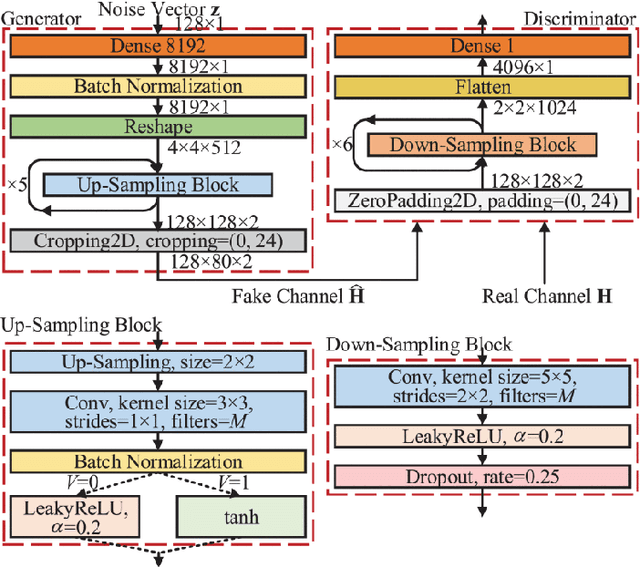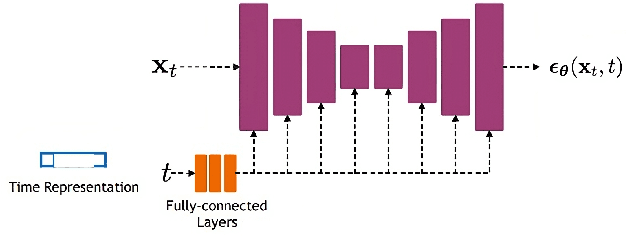Sattar Vakili
Near-Optimal Sample Complexity in Reward-Free Kernel-Based Reinforcement Learning
Feb 11, 2025Abstract:Reinforcement Learning (RL) problems are being considered under increasingly more complex structures. While tabular and linear models have been thoroughly explored, the analytical study of RL under nonlinear function approximation, especially kernel-based models, has recently gained traction for their strong representational capacity and theoretical tractability. In this context, we examine the question of statistical efficiency in kernel-based RL within the reward-free RL framework, specifically asking: how many samples are required to design a near-optimal policy? Existing work addresses this question under restrictive assumptions about the class of kernel functions. We first explore this question by assuming a generative model, then relax this assumption at the cost of increasing the sample complexity by a factor of H, the length of the episode. We tackle this fundamental problem using a broad class of kernels and a simpler algorithm compared to prior work. Our approach derives new confidence intervals for kernel ridge regression, specific to our RL setting, which may be of broader applicability. We further validate our theoretical findings through simulations.
Kernel-Based Function Approximation for Average Reward Reinforcement Learning: An Optimist No-Regret Algorithm
Oct 30, 2024Abstract:Reinforcement learning utilizing kernel ridge regression to predict the expected value function represents a powerful method with great representational capacity. This setting is a highly versatile framework amenable to analytical results. We consider kernel-based function approximation for RL in the infinite horizon average reward setting, also referred to as the undiscounted setting. We propose an optimistic algorithm, similar to acquisition function based algorithms in the special case of bandits. We establish novel no-regret performance guarantees for our algorithm, under kernel-based modelling assumptions. Additionally, we derive a novel confidence interval for the kernel-based prediction of the expected value function, applicable across various RL problems.
Open Problem: Order Optimal Regret Bounds for Kernel-Based Reinforcement Learning
Jun 21, 2024Abstract:Reinforcement Learning (RL) has shown great empirical success in various application domains. The theoretical aspects of the problem have been extensively studied over past decades, particularly under tabular and linear Markov Decision Process structures. Recently, non-linear function approximation using kernel-based prediction has gained traction. This approach is particularly interesting as it naturally extends the linear structure, and helps explain the behavior of neural-network-based models at their infinite width limit. The analytical results however do not adequately address the performance guarantees for this case. We will highlight this open problem, overview existing partial results, and discuss related challenges.
Optimal Regret Bounds for Collaborative Learning in Bandits
Dec 15, 2023Abstract:We consider regret minimization in a general collaborative multi-agent multi-armed bandit model, in which each agent faces a finite set of arms and may communicate with other agents through a central controller. The optimal arm for each agent in this model is the arm with the largest expected mixed reward, where the mixed reward of each arm is a weighted average of its rewards across all agents, making communication among agents crucial. While near-optimal sample complexities for best arm identification are known under this collaborative model, the question of optimal regret remains open. In this work, we address this problem and propose the first algorithm with order optimal regret bounds under this collaborative bandit model. Furthermore, we show that only a small constant number of expected communication rounds is needed.
Robust Best-arm Identification in Linear Bandits
Nov 08, 2023Abstract:We study the robust best-arm identification problem (RBAI) in the case of linear rewards. The primary objective is to identify a near-optimal robust arm, which involves selecting arms at every round and assessing their robustness by exploring potential adversarial actions. This approach is particularly relevant when utilizing a simulator and seeking to identify a robust solution for real-world transfer. To this end, we present an instance-dependent lower bound for the robust best-arm identification problem with linear rewards. Furthermore, we propose both static and adaptive bandit algorithms that achieve sample complexity that matches the lower bound. In synthetic experiments, our algorithms effectively identify the best robust arm and perform similarly to the oracle strategy. As an application, we examine diabetes care and the process of learning insulin dose recommendations that are robust with respect to inaccuracies in standard calculators. Our algorithms prove to be effective in identifying robust dosage values across various age ranges of patients.
Random Exploration in Bayesian Optimization: Order-Optimal Regret and Computational Efficiency
Oct 23, 2023Abstract:We consider Bayesian optimization using Gaussian Process models, also referred to as kernel-based bandit optimization. We study the methodology of exploring the domain using random samples drawn from a distribution. We show that this random exploration approach achieves the optimal error rates. Our analysis is based on novel concentration bounds in an infinite dimensional Hilbert space established in this work, which may be of independent interest. We further develop an algorithm based on random exploration with domain shrinking and establish its order-optimal regret guarantees under both noise-free and noisy settings. In the noise-free setting, our analysis closes the existing gap in regret performance and thereby resolves a COLT open problem. The proposed algorithm also enjoys a computational advantage over prevailing methods due to the random exploration that obviates the expensive optimization of a non-convex acquisition function for choosing the query points at each iteration.
Adversarial Contextual Bandits Go Kernelized
Oct 02, 2023Abstract:We study a generalization of the problem of online learning in adversarial linear contextual bandits by incorporating loss functions that belong to a reproducing kernel Hilbert space, which allows for a more flexible modeling of complex decision-making scenarios. We propose a computationally efficient algorithm that makes use of a new optimistically biased estimator for the loss functions and achieves near-optimal regret guarantees under a variety of eigenvalue decay assumptions made on the underlying kernel. Specifically, under the assumption of polynomial eigendecay with exponent $c>1$, the regret is $\widetilde{O}(KT^{\frac{1}{2}(1+\frac{1}{c})})$, where $T$ denotes the number of rounds and $K$ the number of actions. Furthermore, when the eigendecay follows an exponential pattern, we achieve an even tighter regret bound of $\widetilde{O}(\sqrt{T})$. These rates match the lower bounds in all special cases where lower bounds are known at all, and match the best known upper bounds available for the more well-studied stochastic counterpart of our problem.
Generative Diffusion Models for Radio Wireless Channel Modelling and Sampling
Aug 10, 2023



Abstract:Channel modelling is essential to designing modern wireless communication systems. The increasing complexity of channel modelling and the cost of collecting high-quality wireless channel data have become major challenges. In this paper, we propose a diffusion model based channel sampling approach for rapidly synthesizing channel realizations from limited data. We use a diffusion model with a U Net based architecture operating in the frequency space domain. To evaluate how well the proposed model reproduces the true distribution of channels in the training dataset, two evaluation metrics are used: $i)$ the approximate $2$-Wasserstein distance between real and generated distributions of the normalized power spectrum in the antenna and frequency domains and $ii)$ precision and recall metric for distributions. We show that, compared to existing GAN based approaches which suffer from mode collapse and unstable training, our diffusion based approach trains stably and generates diverse and high-fidelity samples from the true channel distribution. We also show that we can pretrain the model on a simulated urban macro-cellular channel dataset and fine-tune it on a smaller, out-of-distribution urban micro-cellular dataset, therefore showing that it is feasible to model real world channels using limited data with this approach.
Kernelized Reinforcement Learning with Order Optimal Regret Bounds
Jun 13, 2023Abstract:Reinforcement learning (RL) has shown empirical success in various real world settings with complex models and large state-action spaces. The existing analytical results, however, typically focus on settings with a small number of state-actions or simple models such as linearly modeled state-action value functions. To derive RL policies that efficiently handle large state-action spaces with more general value functions, some recent works have considered nonlinear function approximation using kernel ridge regression. We propose $\pi$-KRVI, an optimistic modification of least-squares value iteration, when the state-action value function is represented by an RKHS. We prove the first order-optimal regret guarantees under a general setting. Our results show a significant polynomial in the number of episodes improvement over the state of the art. In particular, with highly non-smooth kernels (such as Neural Tangent kernel or some Mat\'ern kernels) the existing results lead to trivial (superlinear in the number of episodes) regret bounds. We show a sublinear regret bound that is order optimal in the case of Mat\'ern kernels where a lower bound on regret is known.
Image generation with shortest path diffusion
Jun 01, 2023Abstract:The field of image generation has made significant progress thanks to the introduction of Diffusion Models, which learn to progressively reverse a given image corruption. Recently, a few studies introduced alternative ways of corrupting images in Diffusion Models, with an emphasis on blurring. However, these studies are purely empirical and it remains unclear what is the optimal procedure for corrupting an image. In this work, we hypothesize that the optimal procedure minimizes the length of the path taken when corrupting an image towards a given final state. We propose the Fisher metric for the path length, measured in the space of probability distributions. We compute the shortest path according to this metric, and we show that it corresponds to a combination of image sharpening, rather than blurring, and noise deblurring. While the corruption was chosen arbitrarily in previous work, our Shortest Path Diffusion (SPD) determines uniquely the entire spatiotemporal structure of the corruption. We show that SPD improves on strong baselines without any hyperparameter tuning, and outperforms all previous Diffusion Models based on image blurring. Furthermore, any small deviation from the shortest path leads to worse performance, suggesting that SPD provides the optimal procedure to corrupt images. Our work sheds new light on observations made in recent works and provides a new approach to improve diffusion models on images and other types of data.
 Add to Chrome
Add to Chrome Add to Firefox
Add to Firefox Add to Edge
Add to Edge